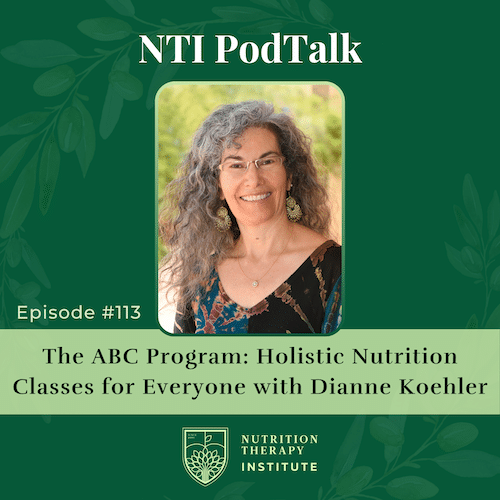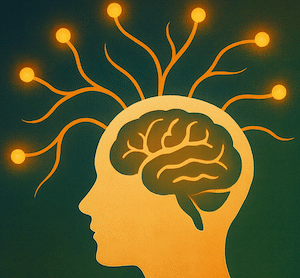
Share this post!
Welcome to the third part of a four-part series on how to cycle sync to improve menstrual issues (make sure to check out parts one and two!).
In this article, we’ll be focusing on the luteal phase, which is likely the part of your cycle where things start to get a little hairy (if they haven’t already). Symptoms such as bloating, irritability, and cravings (to name a few) can crop up and derail your whole system.1 People with periods often complain that the last half of their cycle (the luteal and menstrual phases) is a total bummer because of these issues. Well, we have reached that part of your cycle and I’m here to tell you your luteal phase can actually be positive, productive, and, yes, symptom-free. Don’t believe me? Read on to find out!
What Your Body is Doing During Your Luteal Phase
Your luteal phase comes directly after ovulation and before menstruation. Progesterone is the key hormonal player in this part of your cycle, which typically lasts from 10 to 14 days.1,2 The follicle that released an egg during ovulation (aka the corpus luteum) begins to produce progesterone to prepare the uterine lining for implantation. This rise in progesterone is a sign that your body has ovulated. Estrogen starts to decrease, while progesterone keeps the uterine lining intact in anticipation of a fertilized embryo.1,2
The increase in progesterone also signals your pituitary gland to stop releasing FSH and LH so only one egg is released into the uterus at a time.1 If the egg isn’t fertilized, the corpus luteum is reabsorbed back into the body toward the end of your cycle, halting the production of progesterone and triggering your period 1,2 After steadily decreasing, estrogen peaks and then plummets shortly before your bleed, signaling the body to prepare for another cycle. 1,2
The First Half
During the first half of your luteal phase (if your hormones are balanced), you’ll still have relatively high levels of physical and social energy.1,2 As your hormone levels begin to fall in the second half of this phase, this outward focus turns inward, and you’ll be more likely to emphasize self-care.2 Your energy starts to wane and you begin to move at a slower pace, but rather than feeling fatigued and depleted, you should feel relaxed and stable (kinda like coming out of a chill yoga class).2
The ratio of progesterone to estrogen also heightens your awareness, priming your brain for detail-oriented tasks. 1,2 You might find yourself tackling that to-do list during this phase, while also engaging in activities you find nourishing (hello, bubble bath), and scaling back on your social calendar.1 Basically, your hormonal chemistry is guiding you to wrap things up in preparation for your period, which is a time of rest. So, think of your luteal phase as the transition from summer to fall: the leaves are beginning to turn, energy is winding down, and you’re prepping for the long rest of winter (menstruation).
Luteal Phase Cycle Symptoms

So why is this part of the menstrual cycle such a bummer for so many folks? Well, it’s a combo of factors, the first one being estrogen dominance. Though the luteal phase is associated with a rise in progesterone, it’s actually too much estrogen that causes most of your cycle issues.1,2 If you don’t make enough progesterone or you have excess estrogen (or both), cue those nasty PMS symptoms that have you cursing your cycle. During this phase, folks can experience a range of unpleasant symptoms such as acne, bloating/fluid retention, breast tenderness, irritability, anxiety, mood swings, fatigue, and headaches/migraines due to an imbalance between these two key hormones.
But wait, there’s more!
The Second Half
In the second half of your cycle, as estrogen decreases, your serotonin levels naturally drop (remember, estrogen enhances the release of serotonin).2 During your ovulatory phase, and again right before your period, estrogen surges and can cause anxiety if your body doesn’t metabolize it effectively.2 However, as estrogen levels fall during your luteal phase, you can experience depression due to a decrease in serotonin and a reduction in the brain connections estrogen promotes.2 For a quick fix, you may find yourself reaching for cookies, brownies, or anything sweet to boost your serotonin levels.2
Challenges
The food cravings continue, as your appetite and metabolism increase during this phase.2 The decrease in estrogen combined with the rise in progesterone stimulates your hunger and your energy expenditure can jump up to 16%. These changes are designed to support a potential pregnancy; however, they also cause the food cravings you may be battling each month.2 Though the body naturally needs more calories in this phase, folks often find themselves turning to high-caloric, nutrient-poor foods like chips and cookies to satisfy these cravings, which can negatively impact our hormonal balance (sugar spikes and extra weight are associated with estrogen dominance). 2
This part of your cycle is also associated with slower GI transit time and decreased immunity.2 Have you ever noticed you get backed up or run down during your luteal phase? The rise in progesterone causes your muscles to relax, which slows down your GI tract and can cause constipation. Your immune system also downshifts as hormone levels decrease, which prevents the body from attacking a potentially fertilized egg.2 If your hormones are balanced, this shift should be unnoticeable; however, if you’re experiencing PMS, you’re more likely to pick up a bug.2
Sounds fun, doesn’t it?
Don’t worry, help is on the way. I’m here to tell you these issues aren’t your destiny, but rather the result of hormonal imbalance that, yes, can be addressed. Cycle syncing offers a natural and delicious way to combat all these symptoms, realign your hormones, and skate your way through this part of your cycle, symptom-free. Let’s dive in.
Core Nutrients & Power Foods for the Luteal Phase

Though your body requires more calories in this part of your cycle, luteal phase foods help combat cravings by highlighting slow-burning, complex carbohydrates that are nutrient-dense, flush estrogen from your system, and satisfy your hunger.2 Whole grains (brown rice, millet) and high-fiber fruits and vegetables (apples, pears, sweet potato, squash) stave off sugar cravings by stabilizing your blood sugar so you aren’t reaching for that extra cookie.1,2 The fiber in these foods keeps you satiated and promotes regular BMs, helping to alleviate constipation and estrogen dominance (remember, one way estrogen leaves the is body through stool). The healthy, natural sugars in these foods also stabilize serotonin levels, which helps prevent depression, mood swings, and irritability.1,2
In addition to these killer benefits, luteal phase foods support progesterone production and promote a healthy ratio of estrogen to progesterone.1,2 Their nutrient density also increases immunity (ditch raw foods in favor of cooked during this phase so nutrients are easier to absorb).2 Finally, consuming more nutrient-dense, higher-calorie foods during this phase will combat major energy slumps during your period.2
To remember what to eat here, think of an abundant autumn harvest: apples, pears, squash, sweet potato, pumpkin…you can’t go wrong.
Key Takeaways
- The luteal phase comes after ovulation and before your period; it is your “inner autumn” and is associated with PMS
- Progesterone is the key hormonal player during this part of your cycle
- Hormone levels begin to fall in the second half of this phase, energy starts to wane, and your focus turns inward
- Your appetite goes up, your metabolism increases, and you need to consume more calories
- Estrogen dominance is behind most of your cycle symptoms
- Symptoms can include acne, bloating/fluid retention, breast tenderness, irritability, anxiety/depression, mood swings, fatigue, headaches/migraines, food cravings, constipation, reduced immunity
- Luteal phase foods highlight nutrient-dense, complex carbs to combat symptoms and promote hormonal balance
Resources & Recipes for the Luteal Phase
For a complete list of foods that support your luteal phase, check out Alisa Vitti’s books WomanCode or In the Flo.
I also recommend getting a period tracking app (there are many out there) so you know which cycle phase you’re in. If you want to take things further, check out the Inito device, which tracks your reproductive hormones in real time (it’s awesome!). If your hormones are super out of whack, firstly, I feel you—hang in there—and secondly, consider working with a holistic nutrition therapist and/or functional medicine practitioner for more in-depth support.
Luteal-friendly Recipes
- Warm Spiced Butternut Squash Salad with Apples and Raw Pumpkin Seeds
- Sweet potato brownies
- Squash Stuffed with Pears and Wild Rice
- Dairy-free Turmeric Pumpkin Pie Panna Cotta
Related Articles
- Menstruation Made Easy: How to Cycle Sync for Better Periods
- Menstruation Made Easy Part Two: Ovulatory Phase (Summer) – Time to Shine
- Eating to Support Your Cycle
- Nutritional Support for Endometriosis
- Holistic Nutrition for PCOS
- Love Your Fertility with these Preconception Nutrients
Up Next
Get ready for the final phase – your period! Although many folks dread this part of their cycle, cycle syncing offers a natural way to alleviate the pain and discomfort you may feel each month. There is hope – I promise.
About the author: Jennifer Gartner is a certified Nutrition Therapist Master and specializes in nutritional endocrinology. She is a graduate of NTI’s Nutrition Therapist Master Program and has dedicated her career to helping people create happy hormones.
Medical Disclaimer
This blog provides information for educational purposes only and is not a substitute for professional medical advice, diagnosis, or treatment by a qualified medical professional. The information provided should not be used to diagnose or treat a medical condition. Consult your doctor or other qualified medical professional regarding a medical condition or treatment.
References
- Vitti A. WomanCode. New York, NY: HarperCollins; 2013.
- Vitti A. In the Flo. New York, NY: HarperCollins; 2020.
Images: Photo by Vlada Karpovich on Pexels; Photo by Vlada Karpovich on Pexels; Photo by Vlada Karpovich on Pexels
Share this post!




















